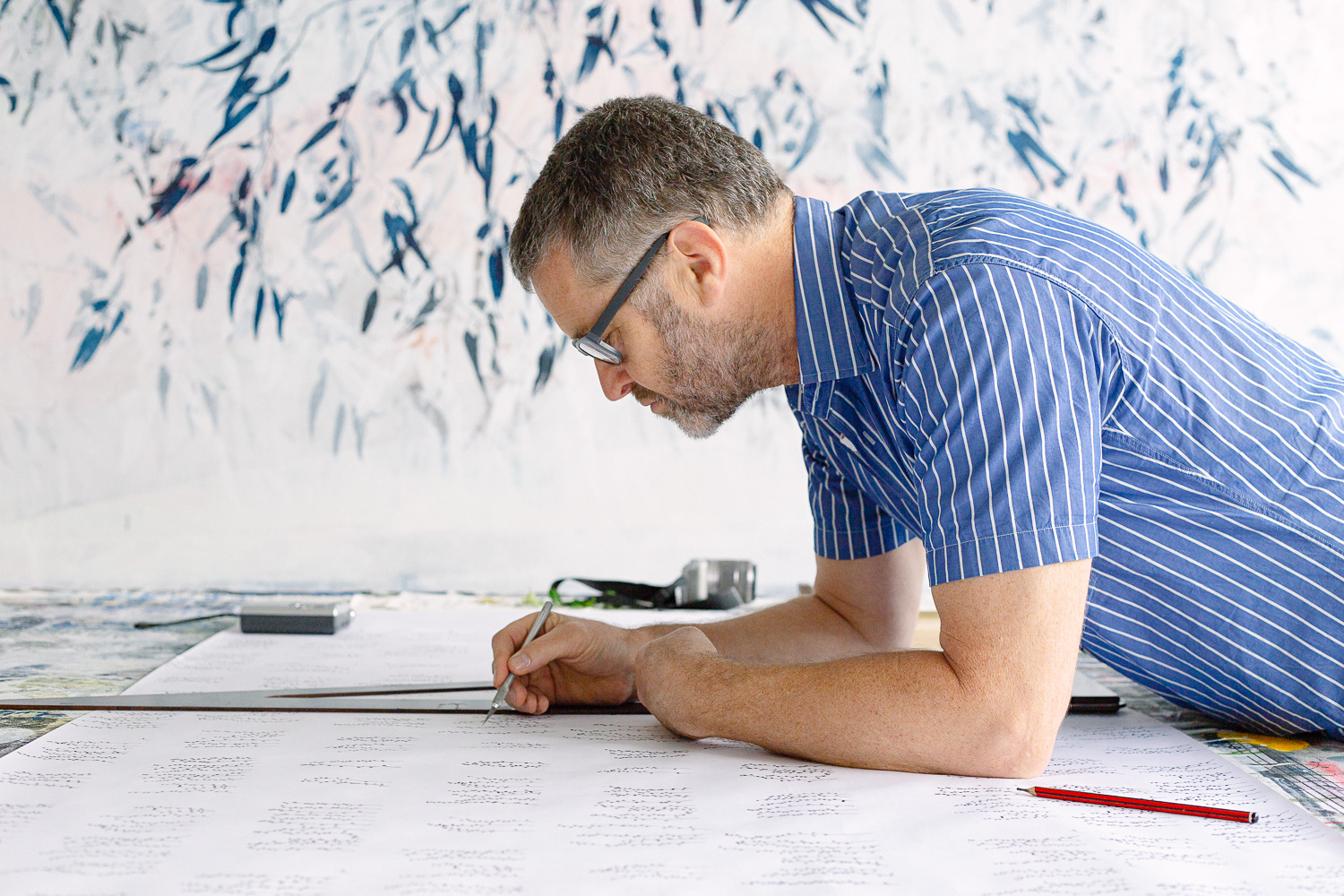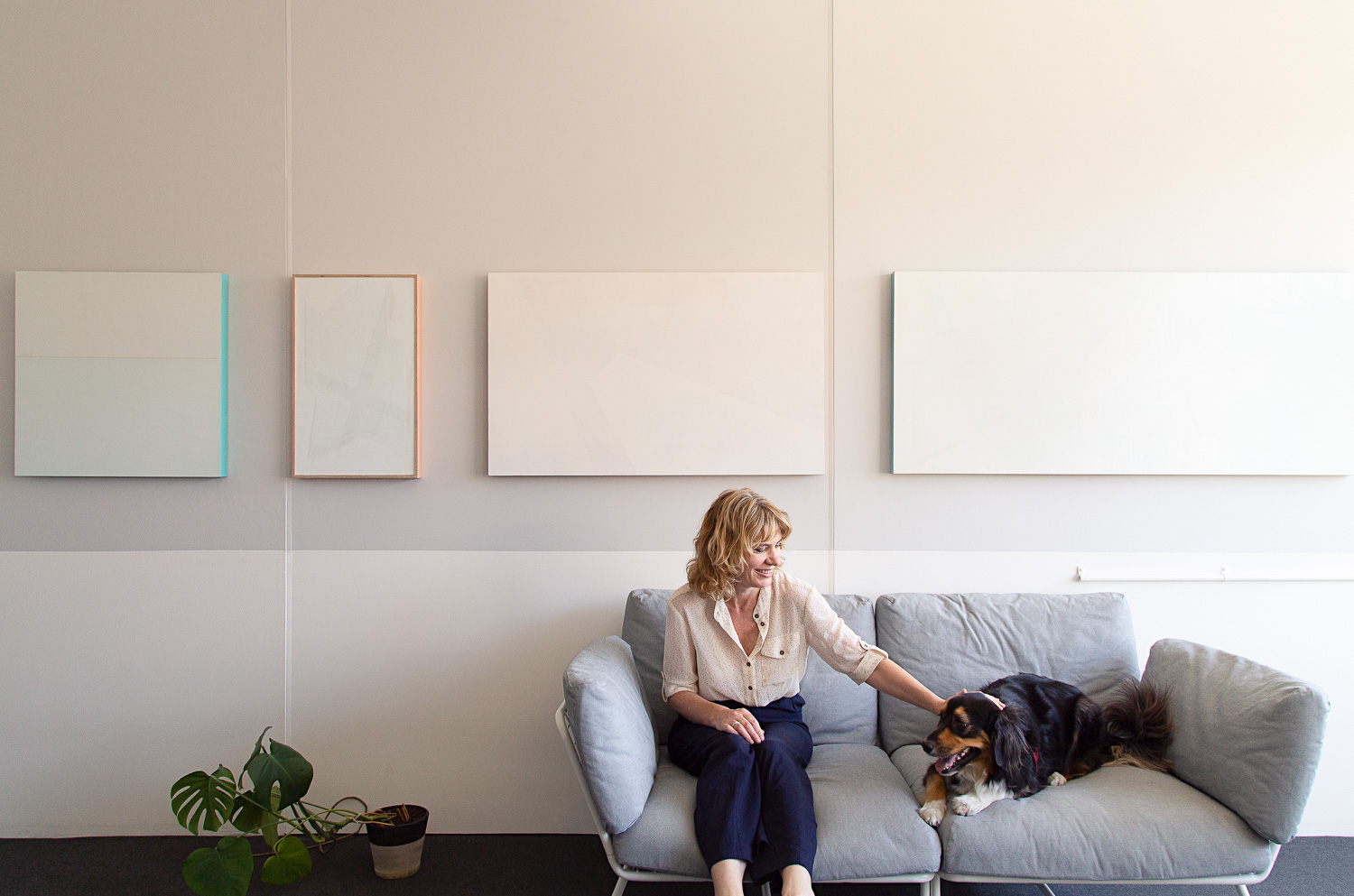Weavings by Melbourne textile artist David Pearce. Photographs by Emma Byrnes
Exploration is often the necessary first step when photographing creative people in their working spaces and over time I have learnt that it’s OK to go in blind and stumble around for a while to get my bearings and soak up their environment. In fact it is the most magical way to undertake the brief. Maintaining my child-like curiosity and appreciating the small moments can help to formulate the story. Slowing down and having a chat by taking coffee/tea with them in their workspace or just sitting and observing them at work can be very valuable time spent.
Because my approach as a photographer stems from a place of observation and interest in human behaviour - I am sensitive to emotions. I am also very happy to be the one on the camera-side and profess I am particularly sensitive to what people go through on the other side. But whilst I like to be on my side of the camera I am certainly not a stealthy, detached observer. A big part of my job is connecting with people, reaching out across the borders and boundaries of what may be perceived to exist.
One of the first things I read is how comfortable this person might be with a lens in their face. This is something that may have been flagged beforehand but I generally also judge on the day. I don’t like being an imposition on people’s intimate spaces and so I often choose to tread slowly yet quietly confident that the trust will build over time.
If the person is more reserved I will often employ techniques like long exposures (blurring the subject), unconventional framing and letting their work and tools speak on their behalf whilst they can ebb and flow around the edges. This approach can tend to result in more ethereal or suggestive imagery.
But If I sense that they are instantly relaxed then we can begin with gusto and the images will often reflect that more robust, sharp and bold approach.
Often their personal grooming/attire can be a good indicator of their general approach/working method and hence how they would be best represented.
For example my friend David Pearce whose work is featured in the photographs above is a very meticulous textile artist (it can take up to 4 years for him to make a garment from scratch ie hand spinning, hand dyeing, knitting) His clothes are always well-pressed and he is very well-groomed. His work is painstaking in it’s detail and therefore when he asked me to photograph him with weavings in his studio I almost unconsciously ensured that the images were stripped back and minimal - much like him.
Another visual creative friend Anna of Sweet Polka asked me to document her folio. There is apparently a tried and true formula for documenting folio’s - flat lay, point/shoot done. This is all well and good but I couldn’t help but bring her into the process. Her personal aesthetic reflects the work she does. She wrote a blog post about that day we spent together.
Paintings lined up at Sarah Tomasetti’s studio. Photograph by Emma Byrnes
Another thing I will observe when entering the space of a creative is the colour palette of their work and how it may be reflected in their belongings/clothing/studio environment.
For example my client Sarah Tomasetti has very pared back colour palettes in her oil paintings. And her studio reflects this unfussy quality featuring deep timbers and plastered white walls with very few bright colours, even on the book shelves (pictured above). Having been trained initially as a photojournalist I generally don’t like to interfere with what is in front of me. I take environments more or less as they come and use the surrounds to inform the work. But for some of Sarah’s photo sessions I have removed just one or two items (such as bright plastic buckets or a flouro highlighter from her desk) as they have distracted from what is otherwise a very unconsciously nuanced scenario that ties in so wonderfully with her paintings and their palette.
I will also look at the equipment and materials the artist uses. How they are stored? Are they messy? Tidy? Does this reflect on their personal style/artworks/design? Physical features can also play a big part - wild hair/dirty hands/bare feet?
For example my friend Joanna Fowles is a textile dying creative . Her indigo-stained hands and mottled drop sheets are a big indicator of her work life and practice. Images capturing these details would certainly be key photographs in a story about her creative practice. In fact next time I visit Sydney I am compelled to enter her studio and put aside some time to capture her at work :-)
Sometimes time pressure can take me into the SHOOT FIRST/ TALK LATER work mode. Or the artist may be already engaged in their work when I step into the space. Rather than interrupting what is obvious flow I will stand back and observe - ascertaining the mood, environment, personality through subtle cues and markers. Are they happy for me to be there? I try to make eye contact and if they respond then I will nod and gain their trust. Other times they may feel uncomfortable with me interrupting and I slow down to let them know that I am not a threat to the pace of the environment and will warm them up slowly.
Other questions that I will ask myself during a shoot are:
Do I need to change my point of view or my lens? Do I need to guide the artist into a different part of the workspace? Do I wait for more suitable light? Should I get less literal and use slower shutter speeds or multiple exposures?
So many variables go into creating the right circumstances for these shoots to succeed but when I find myself in these situations I am like a pig in mud.
Get in touch if you would like to book a photography session in your creative space.
And view other blog posts in the “intimate observations” series here.













































